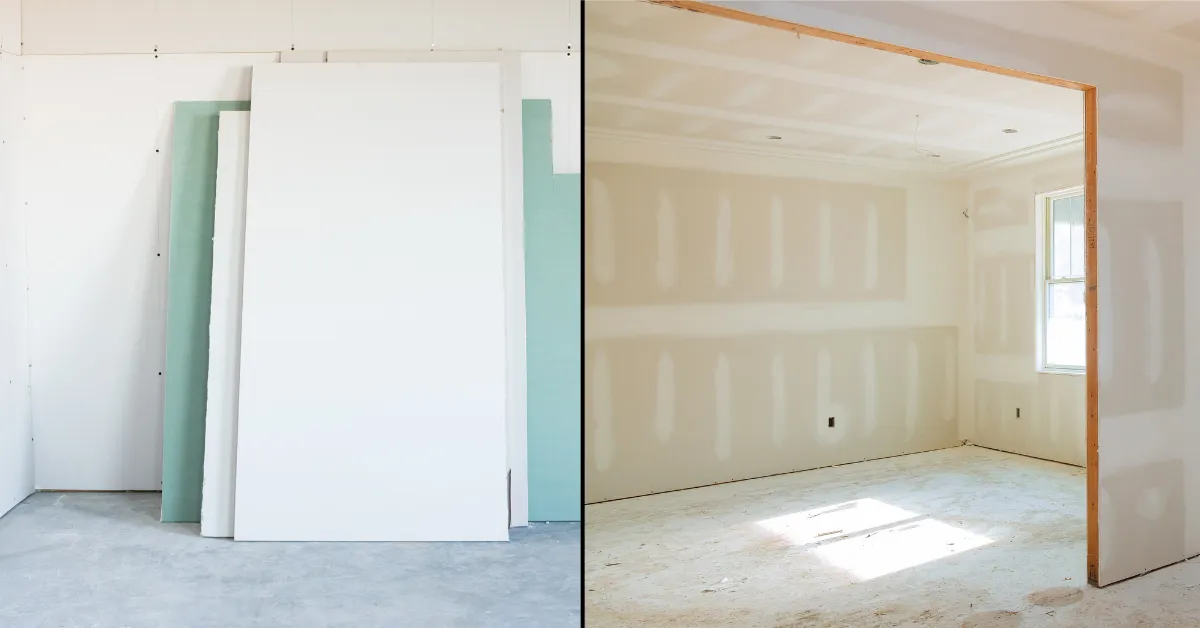When planning a home renovation or remodel in the USA, homeowners often face the question of choosing between sheetrock vs drywall. Though these terms are frequently used interchangeably, understanding their subtle differences can have a significant impact on the overall quality, durability, and cost of your project. Whether you are updating your living room, adding a new room, or modernizing your kitchen, knowing what each material offers ensures your remodel goes smoothly and meets your expectations.
Understanding Sheetrock and Drywall
What Is Sheetrock?
Sheetrock is a brand name for drywall, produced with specific manufacturing standards that often include additives for strength and fire resistance. Many contractors prefer sheetrock for its consistent thickness and smooth surface, making it easier to finish and paint. It is particularly popular in remodel projects where speed and uniformity are essential, as it reduces installation time and offers reliable performance.
What Is Drywall?
Drywall is the generic term for gypsum boards used in interior walls and ceilings. Available in various thicknesses and types, it can be tailored to specific project needs. Drywall is cost-effective, widely available, and flexible enough for both large-scale remodels and smaller renovations. Understanding drywall types, such as moisture-resistant or soundproof panels, helps homeowners make informed decisions during remodel planning.
Key Differences Between Sheetrock and Drywall
Composition and Quality
While both sheetrock vs drywall are made primarily from gypsum, sheetrock often includes proprietary additives that enhance durability and fire resistance. Drywall, as a general category, may vary more in quality depending on the manufacturer. This distinction is important when considering high-traffic areas or rooms that need extra safety features.
Installation and Finish
Sheetrock’s consistent quality allows for a smoother finish and easier installation. Contractors can achieve a professional look more quickly compared to some standard drywall panels, which may require extra sanding and finishing. For homeowners looking for a polished and uniform appearance, choosing sheetrock can save time and effort.
Benefits of Using Sheetrock in Remodel Projects
Strength and Longevity
Sheetrock is engineered to resist dents, scratches, and minor impacts, making it ideal for busy households or high-use spaces. Its reinforced structure ensures the walls stay intact longer, reducing the likelihood of future maintenance needs.
Fire Resistance and Safety
Certain sheetrock variants come with enhanced fire-resistant properties. This makes them suitable for kitchens, garages, and utility rooms where fire safety is a concern. By using sheetrock, remodelers can add an extra layer of security to their homes.
Ease of Installation
Sheetrock panels are manufactured to precise dimensions, which simplifies hanging and finishing. This reduces labor time and helps achieve seamless seams and edges, improving the overall aesthetic of any remodel.
Why Drywall Remains a Popular Choice
Affordability
Drywall is typically less expensive than branded sheetrock, making it an attractive choice for budget-conscious remodels. Homeowners can cover large areas without significantly increasing project costs while still achieving a clean and functional wall surface.
Versatility
With various thicknesses and specialized options, drywall is highly adaptable to different remodeling needs. From moisture-resistant boards for bathrooms to soundproof panels for bedrooms, drywall offers flexibility that can meet diverse project requirements.
Availability
Drywall is widely available across the USA, which means homeowners can find it easily in local suppliers or big-box stores. Its accessibility makes it convenient for projects that require immediate material procurement without delays.
Maintenance and Care Tips for Wall Panels
Even though sheetrock and drywall are durable, proper care extends their lifespan and appearance. Consider the following tips:
- Keep walls clean by dusting and wiping with a soft cloth regularly
- Avoid heavy impacts from furniture or doors that may dent panels
- Use gentle cleaning solutions to prevent staining or surface damage
- Ensure proper ventilation in rooms with high humidity to maintain board integrity
By following these practices, both sheetrock and drywall walls can remain attractive and functional for years after installation.
Choosing the Right Option for Your Remodel
When deciding between sheetrock vs drywall, consider the specific goals of your remodel. Factors like budget, room function, and desired finish quality play a critical role. If you prioritize smooth finishes, long-term durability, and fire safety, sheetrock may be the ideal choice. If cost efficiency and material availability are more important, standard drywall provides excellent flexibility without compromising the overall project quality.
Consulting with professional installers ensures that you select the right material for each space. Experienced contractors can provide guidance on panel types, thickness, and installation techniques tailored to your home’s layout and design.
FAQ About Sheetrock and Drywall
What is the main difference between sheetrock and drywall?
Sheetrock is a branded version of drywall, often with enhanced additives for durability and fire resistance. Drywall refers to the general category of gypsum panels used in walls and ceilings.
Can I use sheetrock in high-humidity areas?
Yes, certain sheetrock variants are designed to resist moisture, making them suitable for bathrooms, kitchens, and laundry areas.
Is drywall cheaper than sheetrock?
Typically, drywall is less expensive than branded sheetrock. However, sheetrock can offer benefits that may justify the slightly higher cost, especially in high-traffic or high-safety areas.
Which is easier to install, sheetrock or drywall?
Sheetrock panels are manufactured with precise dimensions, which generally makes them easier to install and finish compared to standard drywall.
Do both materials last the same amount of time?
Both can last many years with proper care, but sheetrock’s reinforced construction may provide greater long-term durability and resistance to wear and tear.
Conclusion
Understanding the nuances of sheetrock vs drywall can make a significant difference in the outcome of a USA remodel. While drywall offers versatility and affordability, sheetrock provides enhanced durability, smoother finishes, and fire-resistant properties. By considering factors such as room function, budget, and long-term needs, homeowners can choose the right material to ensure a successful remodel. For those looking for professional installation with expert advice on selecting the perfect panels, AGP Drywall installation delivers reliable results that combine quality craftsmanship with efficiency.
Choosing between sheetrock and drywall does not have to be complicated when you know what each material offers, ensuring your remodel not only looks great but stands the test of time.


 Blog
Blog